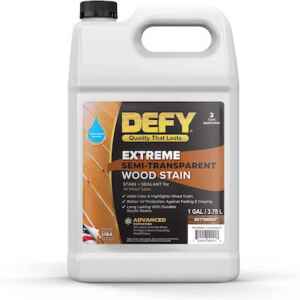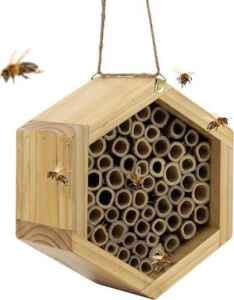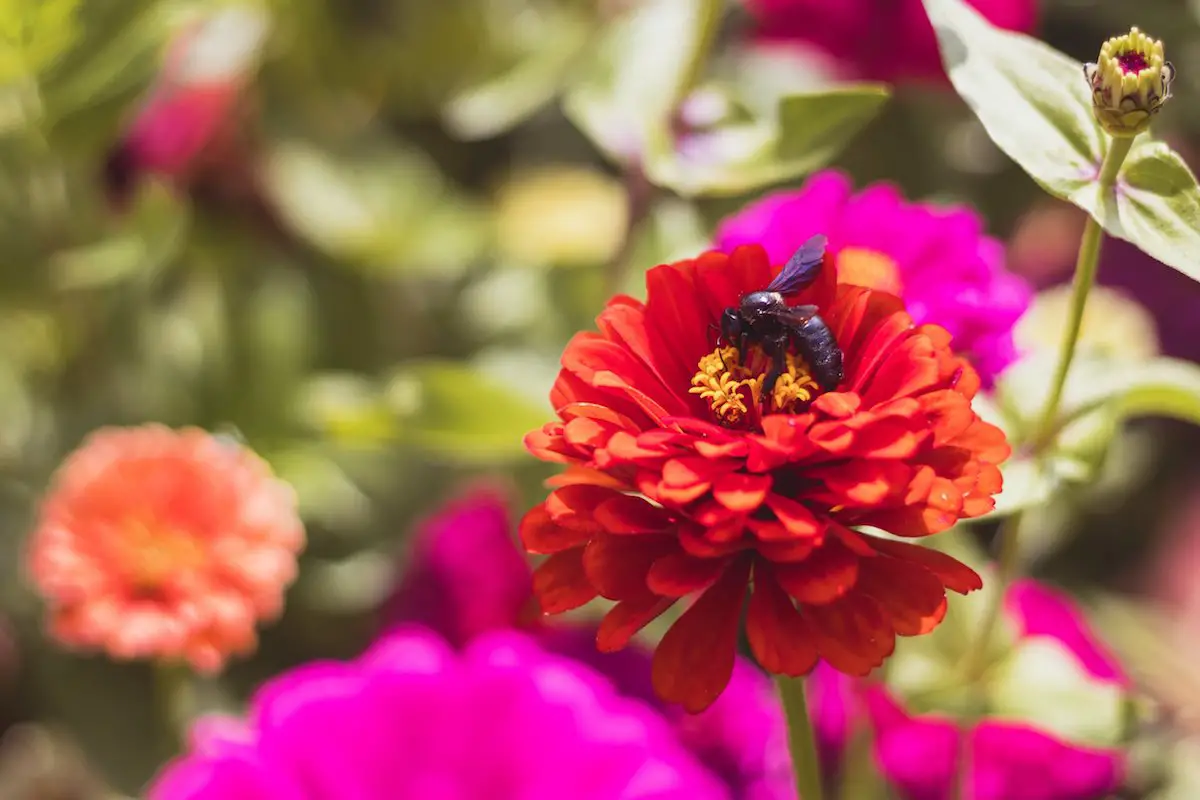10 Natural Ways to Get Rid of Carpenter Bees
Have you ever noticed tiny, perfect circles drilled into the wood of a barn, home, or shed? Your first instinct may have been to blame those pesky termites, but the real culprit is carpenter bees. Carpenter bees appear at the beginning of springtime looking for a new home to lay their eggs, but if you are unaware of these pests, you may find yourself in mounds of trouble with structural repairs, water damage, and wood rot. This post will break down 10 tips and tricks to naturally deter and repel carpenter bees to keep your wood looking great.
Although we want to deter carpenter bees from setting up camp in our wood workings, we don’t want to add unnecessarily harmful chemicals to our home, barn, or shed. So how do I get rid of carpenter bees naturally? Here is a list of natural repellents that will actually work to get rid of carpenter bees.
- Paint/Stain Your Woodwork
- Citrus Oil
- Re-Homing
- Wind Chimes
- Almond Oil
- Plugging Old Carpenter Bee Holes
- Vacuum
- Diatomaceous Earth
- Traps
- Loud Music
Now that you have an idea of some natural ways to get rid of carpenter bees naturally, let’s review each option to see what will be the best fit for your home.

1. Paint/Stain Your Woodwork
Carpenter bees are attracted to untreated, soft wood. Their main targets are redwood, cedar, cypress, and pine. One of the easiest ways to prevent carpenter bees from taking up residence in your home, barn, or shed is by making sure everything wood is freshly stained or painted. This method is also the most effective option. This is especially important if you live in an older home with untreated wood siding or eaves. Because of the age, the wood becomes softer over time, making it an ideal drilling site for the bees. Additionally, they can damage the wood in a newly constructed building if the wood has not been treated. If you notice your paint is peeling or wood is becoming soft, it is recommended to immediately repair it.

2. Citrus Oil
Carpenter bees are naturally repelled by the smell of citrus. You can make your own DIY citrus oil repellent by boiling down the rinds of citrus and pouring the solution into a spray bottle. Spray the mixture along affected surfaces such as exposed wooden beams, eaves, outdoor patio furniture, barns, or sheds. Even though bees may be drawn to your fruit juices that get left out, they are mostly attracted to them due to the sugar in them.
3. Re-Homing
Carpenter bees are natural pollinators, so it is not in our best interest to kill them. Instead, you can re-home them! There are synthetic “nests” made out of wood that provide a safe tunnel for carpenter bees to lay their eggs in. You can place the synthetic “nests” away from wood you do not want to be damaged. This is a fantastic solution if you have an active flower garden. That way you can keep your home free of structural damage caused by carpenter bees and get your flowers pollinated by them!

4. Wind Chimes
Carpenter bees do not like the vibrations caused by wind chimes, so placing wind chimes along wooden structures will prevent Carpenter bees from making their home nearby. Not only is this an effective, inexpensive solution, but you are also adding to the aesthetic of your home! Wind chimes are also known to have relaxing qualities, so you can enjoy your yard with lovely chimes ringing in the wind and keeping the bees away.

5. Almond Oil
Carpenter bees can be naturally deterred by placing a bit of almond oil alongside wooden structures, furniture, or playground equipment. Because the smell of almonds repels bees, they will be less likely to drill nesting tunnels in your wood structures.
6. Plugging Up Old Carpenter Bee Holes
Carpenter bees come out in the springtime, so if you find any abandoned holes in the fall or winter, we highly recommend plugging them up. You can use organic material dipped in glue to seal the pathways tight. After plugging the holes, make sure to paint or stain over them, as this is one of the only ways to prevent the bees from coming back and starting the process over again.
7. Vacuum
If you have noticed some Carpenter bees nesting in your wood structures, you can take a vacuum attachment and suck them out of their tunnels. Be careful, however, because female carpenter bees have a painful sting. The male carpenter bees do not have the ability to sting, but they guard the entrance of the tunnels and can be a nuisance to avoid. After vacuuming the bees up, you can take them to a rural location and release them. Wear something that protects your skin from stingers, the bees will not be very pleased when you release them.

8. Diatomaceous Earth
Diatomaceous Earth is a naturally occurring rock that can be finely ground into powder. Most insects and vermin are repelled by this powder. If you already have a carpenter bee issue, place large amounts of diatomaceous earth at the entrance of the tunnels. Soon after, the bees will evacuate their tunnels. As previously mentioned, the only way to prevent the bees from coming back will be by sealing the tunnels and painting or staining them. Diatomaceous earth can be purchased from home improvement stores and online.

9. Traps
A DIY trap can be constructed by getting a wooden birdhouse and drilling a hole the size of a plastic water bottle in the bottom. Get two plastic water bottles and attach them to the neck of the bottle. The trap is designed to lure the carpenter bees into the birdhouse where they think they can lay their eggs and make a nest, but they will fall into the plastic bottle below and get trapped. From there, it is up to you to either release them or leave them there. Once there is an accumulation of bees at the bottom of the bottle, empty and start over again.
10. Loud Music
Just like with wind chimes, loud music causes vibrations that deter the carpenter bees from coming close. Although this solution is easy and free, your neighbors will likely also view you as a nuisance. This may be best suited for homes without close-by neighbors. Blast your favorite songs and the bees will be repelled!

Now that we have gone over the best ways to naturally repel and deter carpenter bees from tunneling in your wood structures, let’s go over some frequently asked questions about carpenter bees to better understand them.
Related Questions
Why remove bees naturally?
Bees are an integral part of our ecosystem, as they are natural pollinators. The service they provide is necessary to sustain many of the crops we enjoy. However, sometimes bees become a nuisance. When they begin to build hives in our wooden structures, they can be damaging the structural integrity, allowing in water that causes wood rot, and the damaged wood can be inviting to termites. We strongly recommend that you do not kill the bees, even if they are bothersome. Without the bees, nature’s pollinators, part of the ecosystem could collapse.
Why do carpenter bees nest in wood?
Contrary to what many people believe, the carpenter bees do not eat the wood that they drill through. If you watch the process, the bees leave sawdust in their wake, indicating a lack of consumption. Female carpenter bees are the only ones that dig the tunnels and the only ones that can sting. Because carpenter bees do not exist in a hive, they individually nest and lay eggs instead of a singular queen bee laying eggs. As there is safety in numbers, carpenter bees are less guarded and require a more secure location to lay eggs. The tunnels that they burrow in wood are more private and difficult for large predators to access.
What do carpenter bees look like?
Carpenter bees are larger than typical honeybees. Many are almost a full inch long, and some are only ¾ of an inch long. Whereas honeybees are furry all around, carpenter bees only have a fuzzy back. They have a hairless abdomen that is shiny and black and a fuzzy back with orange or yellow hair.
Are carpenter bees aggressive?
Carpenter bees are not aggressive unless threatened. The female bees are the only ones with a stinger and due to their larger size, the sting is known to be quite painful. Male carpenter bees, however, do not have a stinger. Their role is to guard the tunnel and be a nuisance to anyone who gets too close. Most of the time, carpenter bees are docile and keep to themselves. They feed on pollen and nectar and serve to pollinate crops. It is best to teach children the difference between honeybees and carpenter bees to best avoid getting stung. The more panicked we become around bees, the more likely they are to become startled and view you as a threat. We want to do our part to help save the bees as they are currently listed as endangered.
Conclusion
In conclusion, carpenter bees tunneling in your wood structures can cause lots of unexpected damage. So, as a homeowner, it is in your best interest to make sure all wooden structures are painted or stained to avoid bees housing in them. If you notice any of your wood starting to rot or become soft, replace it immediately. Softwoods are easier for carpenter ants to tunnel in. We highly recommend using natural repellents instead of killing carpenter bees, no matter how much of a problem they still pose, they are a vital part of the ecosystem that we rely on. We hope that you found this article on the different ways how to get rid of carpenter bees naturally useful to help protect your home and the bees. Do you know of any natural repellents that we did not cover? Let us know in the comments!

